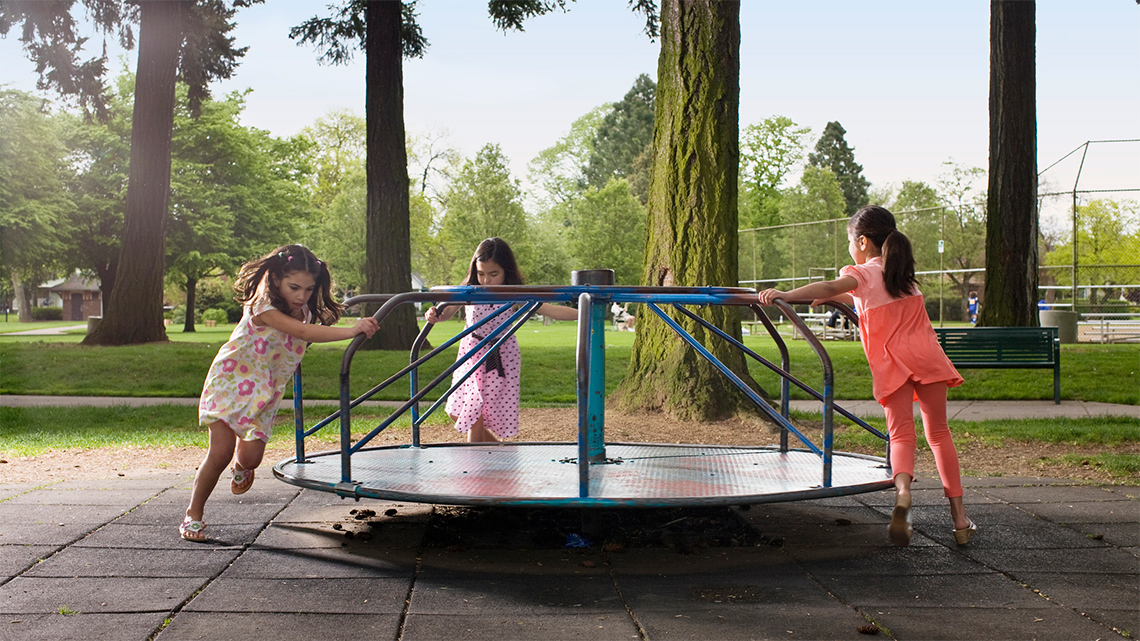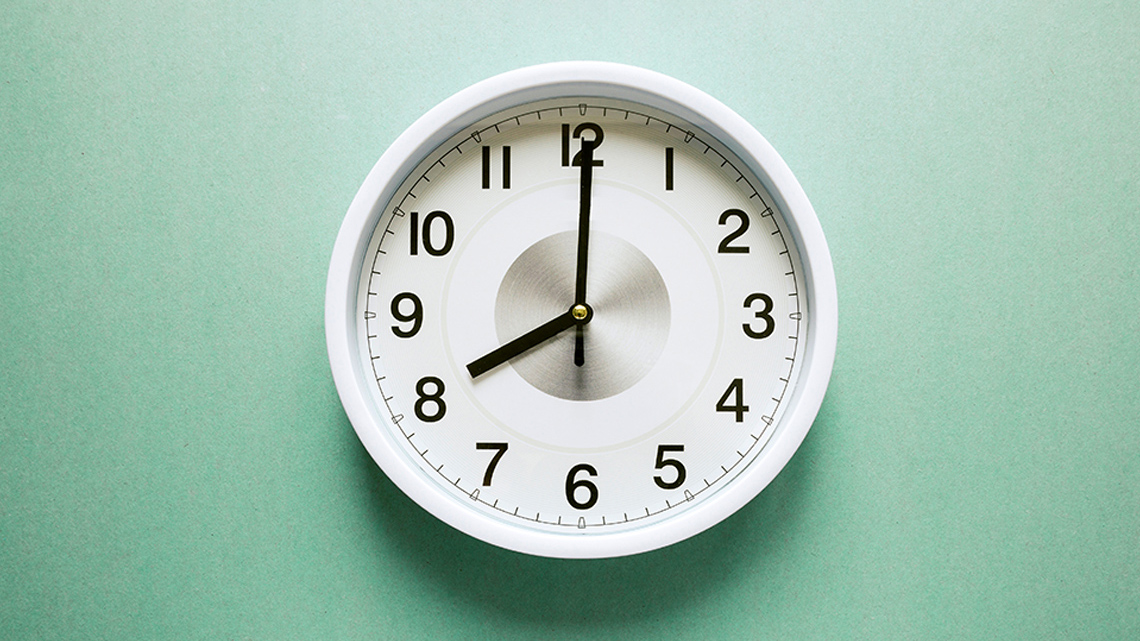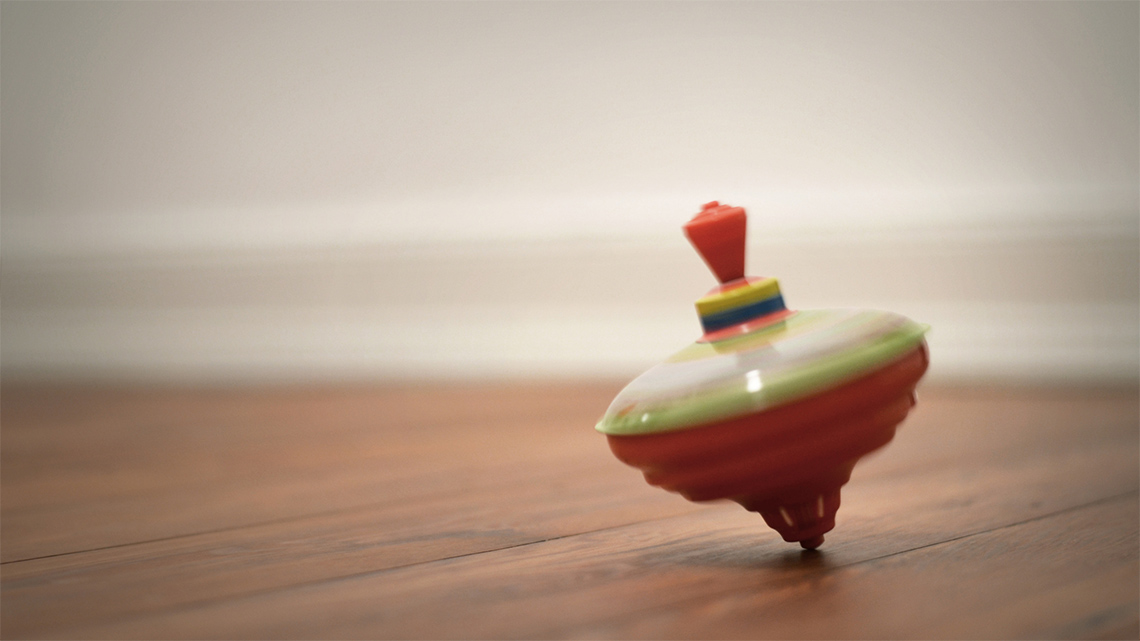Minds On
Notice and wonder
What do these objects have in common? What other objects might fit into this category?
The first object is a merry go round on a playground (which is a spinning circle with handles). The second object is a Ferris wheel. Third object is an analogue clock face. Fourth object is a wheel on a car. Fifth object is a spinning plastic toy made of a circular cone called a ‘spinning top.’
All of these objects spin in full circles! How could this relate to math and transformations?
Action
Task 1: What is a rotation?
A rotation is a type of transformation that can be performed on a grid or Cartesian plane.
A rotation results in the creation of a shape whose orientation has been changed. Just like translations and reflections, rotations do not change the size, area, angles, and line lengths of a shape.
There are three pieces of information required to complete a proper rotation:
In the diagram, the original points are A (3, 2), B (11, 2), C (4, 6), and D (10, 6). After rotation, the new points are A' (-2, 3), B' (-2, 11), C' (-6, 4), and D' (-6, 10).
Centre of rotation
Every point on the original shape turns around the centre of rotation by the same angle. The centre of rotation does not move.
If you were to draw a line from Point A on the original shape to the centre of rotation, and then draw from the centre of rotation to Point A-prime or A' of the rotated image, you will create the angle of rotation.
All points on the original shape will be the same distance from the centre of rotation as the corresponding point on the rotation image.

A Cartesian plane has a trapezoid a a related rotated trapezoid. The centre of rotation is labelled a (0,0). The shape is rotated 90 degrees counterclockwise. The direction is labelled with arrows “counterclockwise” and the angle between point A and A’ is labelled as 90 degrees. The original trapezoid has coordinates A (3,2), B (11,2), C (4,6), and D (10,6). The rotated trapezoid trapezoid has coordinates A’ (-2,3), B’ (-2,11), C’ (-6,4), and D’ (-6,10).
Clockwise rotations vs. counterclockwise rotations
When performing a rotation on a Cartesian plane, the direction the shape rotates will either be counterclockwise or clockwise.
We can use “CCW” to represent counterclockwise, and “CW” to represent clockwise.
Clockwise rotations move in the direction that a clock does. This direction of rotations has negative values.
Counterclockwise rotations move in the opposite direction that a clock does. This direction of rotations has positive values.
For example, a 50° counterclockwise rotation would be called a 50° rotation. However, a 50° clockwise rotation would be called a -50° rotation.

Two clocks that are side by side. The first clock has an arrow going to the left and down, starting at 12 and ending at 7. This arrow is labelled counterclockwise. The second clock has an arrow going to the right and down, starting at 12 and ending at 5. This arrow is labelled clockwise.
Angle of rotation
We can describe the rotation of a shape using degrees.
The rotations start at 0° and go to 360°. A full rotation would be 360°.
Consider: If a full rotation is 360°, how many degrees would it be to move through one quadrant on a Cartesian plane? What about 2 quadrants? What about 3 quadrants? What about all 4 quadrants? Let’s examine a diagram showing four counterclockwise rotations.

A Cartesian plane with couterclockwise rotations of 90°, 180°, 270° and 360° is represented. A curved arrow from the x-axis to the y-axis within the first quadrant is labelled 90°. A curved arrow starting at the x-axis in quadrant one and ending at the x-axis in quadrant two is labelled 180°. A curved arrow from the x-axis in quadrant one and ending at the y-axis in quadrant three is labelled 270°. A curved arrow from the x-axis in quadrant one and ending at the x-axis in quadrant four is labelled 360°.
The direction the shape moves will depend on whether it is a counterclockwise or clockwise rotation.
Let’s examine a diagram showing four clockwise rotations on a Cartesian plane. The negative values (in degrees) are considered a negative rotation.

A Cartesian plane with clockwise rotations of -90°, -180°, -270° and -360° is represented. A curved arrow from the x-axis to the y-axis within the fourth quadrant is labelled -90°. A curved arrow starting at the x-axis in quadrant four and ending at the x-axis in quadrant three is labelled -180°. A curved arrow from the x-axis in quadrant four and ending at the y-axis in quadrant two is labelled -270°. A curved arrow from the x-axis in quadrant four and ending at the x-axis in quadrant one is labelled -360°.
You may notice that the degrees are the same as when you rotate in a counterclockwise rotation.
The only difference is they are now negative.
For example, instead of being 90°, it will be -90°.
Instead of always using degrees to reference rotations, we can also use a fraction such as a quarter-turn clockwise (¼ CW) for -90°. Fraction names can be used for some rotations, but you would still have to indicate CCW or CW to specify the direction of rotation.
Complete the Four Rotations on a Cartesian Plane chart in your notebook or using the following fillable and printable document. You can also use another method of your choice.
| Number of quadrants | Degrees of rotation | Fractional turn |
|---|---|---|
| 90° | ||
| 2 quadrants | ||
| 270° | ||
| 4 quadrants | Full-turn (whole) and brings you back to the starting point |
Press the ‘Activity’ button to access Four Rotations on a Cartesian Plane.
Press ‘Let's check!’ to access a completed chart.
Use the Four Rotations on a Cartesian Plane Solutions chart to check your work.
| Number of quadrants | Degrees of rotation | Fractional turn |
|---|---|---|
| 1 quadrant | 90° | Quarter-turn (¼) CCW |
| 2 quadrants | 180° | Half-turn (½) CCW |
| 3 quadrants | 270° | Three-quarter turn (¾) CCW |
| 4 quadrants | 360° | Full-turn (whole) counter clockwise brings you back to the starting point |
Press the ‘Activity’ button to access Four Rotations on a Cartesian Plane Solutions.
Task 2: Practicing rotations
Question 1
Plot the following point A for where it would be on each quadrant of the Cartesian plane if you performed a clockwise rotation of the point 90°, 180°, and 270°.

Record the new coordinates after each rotation in a notebook or a method of your choice.
Question 2
Rotate the following triangle clockwise 270°. Connect the dots for the rotated triangle and label each coordinate.
Record the new coordinates after each rotation in a notebook or a method of your choice.

Question 3
Rotate the following rectangle counterclockwise 180°. Connect the dots for the rotated rectangle and label each coordinate.
Record the new coordinates after each rotation in a notebook or a method of your choice.

Determine if the following rotations are correct.
Record your response using a method of your choice.
Question 4
The following small trapezoid is to be rotated counterclockwise 270°. Determine if the following rotations are correct. Record your response using a notebook or a method of your choice.

Cartesian plane with a trapezoid that has the coordinates: A (1,5), B (4,5), C (3, 7), and D (2,7). The rotation image is labelled A’ (-8,2), B’ (-6, 5), C’ (-3, 5), and D’ (-1, 2).
Question 5
The following is a rotation of a square labelled A, B, C, D rotated clockwise 90°.

Cartesian plane with a square that has the coordinates: A (5,3), B (7,3), C (7,5), and D (5,5). The rotation image is labelled A’ (-3, -1), B’ (-3, -3), C’ (-1, -3), and D’ (-1, -1).
Was this rotation completed properly? If not, how should it be changed. If yes, rotate it again to the next quadrant.
Record your ideas in a notebook or a method of your choice.
Question 6
The following smiley face is drawn on a Cartesian plane. Rotate the smiley face until it is facing right side up.
Record the new coordinates after each rotation in a notebook or a method of your choice.

Cartesian plane with a smiley face on it. The eyes are two points with the coordinates: (4,6) and (6, 6). There is a circle around the eyes and a smile under them, making it a smiley face. The smiley face is in quadrant 1, but upside down. The mouth is a curved line with end points (4,8) and (6,8). The bottom of the circle is at (5,10), the left side is at (8,7), the top is at (5,4), and the right is at (2, 7).
Press ‘Hint’ to reveal a hint.
Start by recording the coordinates we know on the smiley face.
- How many degrees did you need to rotate the smiley face and make it face the right way?
- Did you rotate clockwise or counterclockwise?
Consolidation
Task 1: Rotational symmetry design
Let’s get creative!
You will:
- Create or describe a design of your choice on one quadrant of the Cartesian plane.
- Rotate your design onto all quadrants of the Cartesian plane.
- Describe, in words, each of the rotations you have completed.
Alternative task: Design a shape or object on a grid, and provide oral or audio instructions for how this shape could be rotated on a plane.
Record your work, or record a detailed description using a method of your choice. If you would like, you can complete the activity using TVO Mathify. You can also use your notebook or the following fillable and printable document.

Press the ‘TVO Mathify' button to access this interactive whiteboard and the ‘Activity’ button for your note-taking document. You will need a TVO Mathify login to access this resource.
TVO Mathify (Opens in a new window) Activity (Open PDF in a new window)Task 2: Making connections
Reflect on and answer the questions that follow:
- Why is it important to understand the difference between clockwise and counterclockwise rotations?
- How would you explain how to perform rotations on a Cartesian plane to someone? What is important for them to understand?
- We discussed various examples of rotations found in various situations. Why is this important to know? What jobs/careers might require a knowledge of rotations?
Record your ideas in a notebook or a method of your choice.
Reflection
As you read through these descriptions, which sentence best describes how you are feeling about your understanding of this learning activity? Press the button that is beside this sentence.
I feel...
Now, record your ideas using a voice recorder, speech-to-text, or writing tool.
Connect with a TVO Mathify tutor
Think of TVO Mathify as your own personalized math coach, here to support your learning at home. Press ‘TVO Mathify’ to connect with an Ontario Certified Teacher math tutor of your choice. You will need a TVO Mathify login to access this resource.
TVO Mathify (Opens in a new window)



